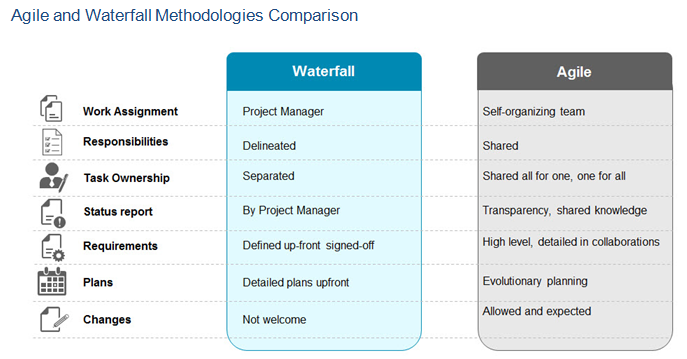Agile in a Waterfall World: Determining the Right Project Methodology
Abstract
Agile has moved from relative obscurity in the world of project management to the mainstream.

Celent has released a new report titled Agile in a Waterfall World. The report was written by Colleen Risk, a Senior Analyst with Celent’s Insurance practice.
In the 16 years since the Agile Manifesto was created, agile has moved from relative obscurity in the world of project management to the mainstream. Yet, for many insurance company executives, directors, and managers, agile still may be confusing, obscure, and not trusted.
Celent analysts frequently receive questions such as: “Is it possible to use agile in a legacy environment?”; “I am running a fixed cost project, is agile a good choice for the project?” and “What types of projects does agile best fit?” Understanding the steps in each methodology as well as the advantages and disadvantages can make choosing the right approach easier. The report includes examples of successful agile transformation case studies.
Agile was created to be the opposite of waterfall. Waterfall is structured. Agile is flexible. Waterfall requires the I’s to be dotted and the T’s to be crossed before beginning the project. Instead of in-depth planning at the beginning of the project, agile methodologies seek to improve the product with each iteration.
Agile handles uncertainty and changing or unclear requirements well. Waterfall is best suited for projects with clearly defined end goals, especially ones where you don’t expect requirements or final deliverables to change.
Understanding how peers have transformed with agile project development, or modified agile to meet their specific company objectives, can provide ideas for effective ways to introduce it within IT and Operations.
“Today’s insurer needs to improve time to market, adopt new technologies, and enact operational best practices to face market competition,” remarked Risk. “One way to create operational excellence and reduce time to market is to adopt best practices for project development.”


